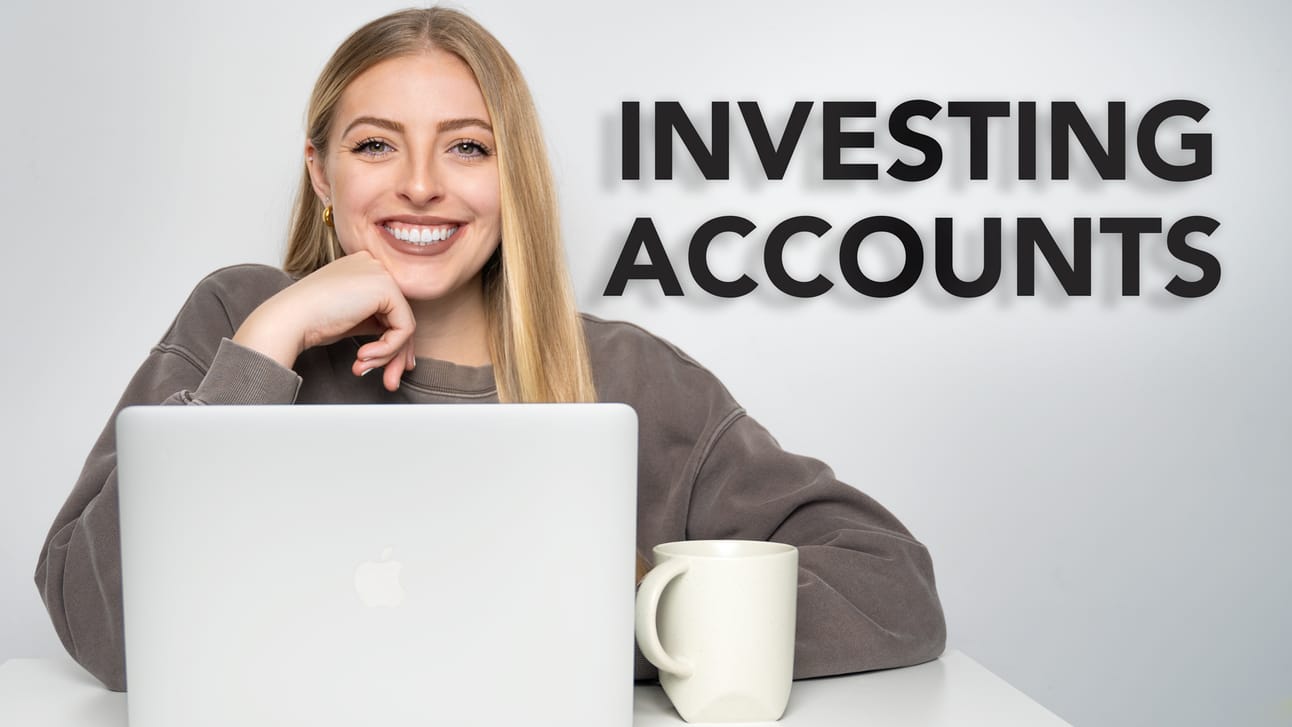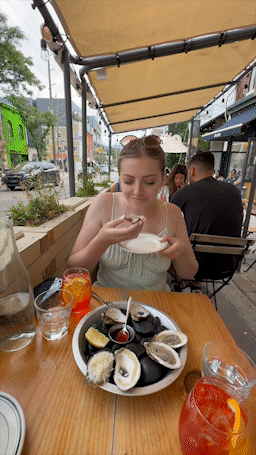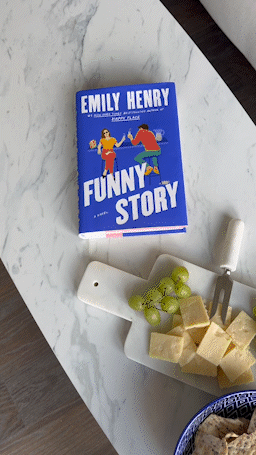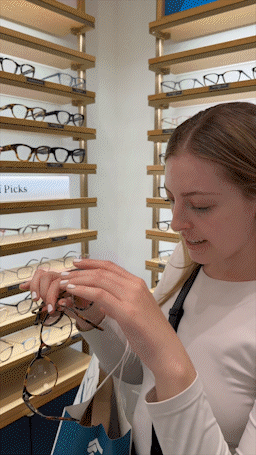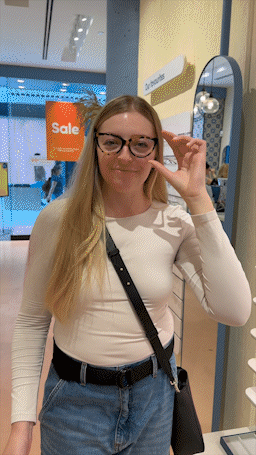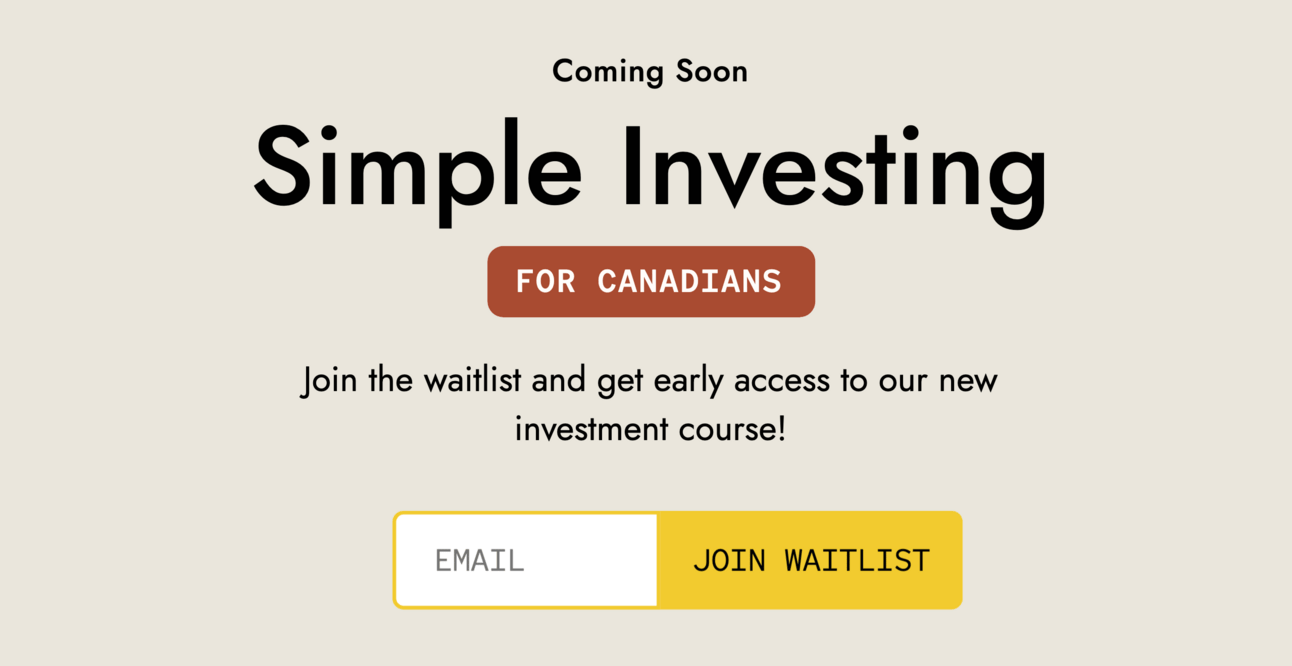- Money Convos with Steph & Den
- Posts
- I Opened A New Investment Account 👀
I Opened A New Investment Account 👀

Happy September! We hope it still feels like summer for at least a little bit longer where you live. Today’s Dennis’ birthday, so we’re having a fun start to the new month, and we hope that you are, too!
We’re back with another issue of Money Convos with Steph & Den, and we have a few personal updates, and - of course - some useful money tips for you this month.
Here’s what’s up in this copy 🤑🗞
One of us opened a new investment account 👀
Steph overspent on eating out last month 🫣
How much it costs to buy glasses 🥸
A quick update on our big project 💰
New season, new money checklist ✅
Money Convo Of The Month
I Maxed Out My FHSA… and Opened An RRSP!
Earlier this year, I maxed out my tax free investment account (in Canada, this account is called a TFSA - if you’re in the US, it’s very similar to a Roth IRA). I’d been working towards using all of the contribution room that I’d built up over the past 10 years (since I was 18!), and was - of course - investing all of the money that I was contributing.
I was so focused on this goal because I’m using my tax free investment account as a place to save (aka invest) for retirement, and I know that if I invest as much as possible, as early as possible, then my money will grow more over the next few decades (thanks, compound interest!).
So, in February, I officially contributed the entire $69,500 that I was allowed to towards this account, and then I had to decide which investment account I was going to use to invest next. I decided to go with the first home investment account, which is a brand new investment account that just launched in Canada (it’s known as an FHSA - if you’re in the US, there isn’t an account that’s exactly like this one, but you can definitely still save (or invest) for your first home!).
The FHSA is a really cool account, because my money will grow tax free inside of it - meaning that when I take the money out of the account to buy a house, I won’t have to pay any taxes on it - and I can also use the money that I put into the account to reduce my taxable income.
Taxable income = the amount of money that you make in a year that the government wants you to pay taxes on. So, if I make a $70,000 salary from my job, I pay taxes all year on that money. But, if I contribute $8,000 to my FHSA, I only have to pay taxes on $62,000 ($70,000 - $8,000 = $62,000). Aka, I save money on taxes and my money grows tax free! For me, considering that I do want to buy a house for myself to live in one day, using this account next made a lot of sense.
The reason I mentioned $8,000 before is because the FHSA has a yearly contribution limit of $8,000 and a lifetime contribution limit of $40,000. So, I can only contribute $8,000 this year, and can add another $8,000 next year, and the year after that, until I hit $40,000. I ended up putting $2,000/month into this account in March, April, May and June, meaning that I was able to max it out (for now!) this summer.
So, after that, I was back to the drawing board again - which account should I use to invest next?? Tbh, it was a pretty easy decision, because there was only one more tax-advantaged account left that I could use (tax-advantaged = tax benefits, which are always great!). That account was a retirement investment account (in Canada, this account is called an RRSP - if you’re in the US, it’s very similar to a 401k). Now, I already mentioned that I’m currently using my tax free investment account for retirement, but the reality is that you (ideally!) will be putting a lot of money towards retirement, which likely means using multiple investment accounts for the same purpose.
My retirement investment account has accumulated about $60,000 worth of contribution room (for an RRSP, you gain contribution room based on how much money you earned the year before - you can contribute up to 18% of your previous year’s income, up to a certain amount). I’ve already invested $2,000/month in both July and August, and I had some additional money come my way this summer that I put towards this account, as well. Hopefully I’ll be able to max out this account within the next few years (remember - I still have to re-max out my TFSA and FHSA again next year!).
If you want to hear exactly how much money I’ve contributed to my RRSP so far - and what ETF(s) I’m investing in (spoiler alert: I’m switching things up, and investing in a different ETF inside of this account) - then check out the video that we’ll be posting on our YouTube channel next week.
We’ll also have a new YouTube video coming out later today after a quick summer break, so stay tuned for that one!
$0 UberEats Challenge - Steph’s Monthly Update
Well, my prediction from last month came true… I definitely had my highest ‘eating out’ spend of the year in August!
I blame it on the fact that it was the last month of summer, okay?! Honestly, I’m not too upset about it, because I clearly knew in advance that I was going to end up spending more than my standard $150/month restaurant budget based on what we had planned in August. Part of me hates to go over this number ever, but I’ll let it go and aim lower for the rest of the year.
So, how bad was the damage? Well, I ended up spending $254.21 on eating out in August, including two post-event meals that we picked up and brought home with us (our go to pick-up spots are Pai and Rudy’s if you’re in Toronto!), along with a stop at our favourite bakery for sandwiches and croissants on a Sunday morning, and a brunch date with a friend at a more-expensive-than-normal spot.
But, I spent $0 on takeout, so it was still a successful month, right?! I think so.
I also spent $50 on coffee shops (as per usual), and then I was happily under budget for groceries this month, coming in with a total of $285.32. I mostly re-made recipes that I’ve already tried this month, but I also hosted a book club for the first time, and had a lot of fun making a mini cheese board (not pictured: tiramisu for dessert!).
Even though I was over my food budget, I had such a great month! I was able to see friends, explore more local spots in the city (shout out to Dennis for buying me many other delicious meals this month), and soak up the last bit of pure summer. I expect to be on, or under, budget for the next few months - let’s see if I can stick to that!
I Bought New Glasses! Here’s How Much It Cost 🤓
I don’t know if you can relate, but my vision has gotten worse over the past few years, and I definitely think it’s related to the amount of hours I spend staring at my laptop screen (and phone screen… 🤫).
I ended up going to the eye doctor this summer, and I was right - my vision has been getting slightly worse, specifically in my left eye, and specifically for seeing far distances, meaning that I needed to buy new glasses (and, actually wear them more often… I’m still working on this!).
I thought it would be interesting to share how much it cost me to 1) go to the optometrist, and 2) buy new glasses, especially as someone without insurance for this (we work for ourselves, and don’t pay for this type of coverage).
Here’s the break down -
Comprehensive eye exam appointment w/ optometrist - $135.00
Single-vision prescription glasses - $225.00
Total cost = $360.00
I spent a bit more on the glasses than I was originally thinking - from my initial research, I thought I’d spend closer to $150. But, when I actually went shopping for frames (I tried on so many different ones), I really wanted to focus on finding the pair that I liked the style of and thought looked good on me. I also wanted a pair that was comfortable, too!
The pair that I kept going back to happened to be a $225.00 pair (if you’re curious, they’re the Langley - Opal Tortoise With Riesling from Warby Parker).
I did wait 2-3 weeks between trying on glasses and actually making the final purchase, so I knew that I was making my decision after sitting on it and thinking it through. I made sure to take pictures of every option I had, so I could go back and look at them again several times over those 2-3 weeks, too.
The good news? I’m happy with my final choice! And I did allocate money in my budget towards these purchases - a win-win for me and for my eyes moving forward.
Simple Investing 👀
A few issues back we mentioned that we were coming out with an investment course that will cover everything you need to know in order to start investing in the stock market (or, if you’ve already started investing, figure out if you’re investing in the ‘right’ way).
We wanted to give you a quick update on when to expect it, now that we’re further along in the process!
We’re still working on the finishing touches, but we know that it’ll be available by the end of this year.
If you haven’t signed up yet, but you’re interested in learning more, you can sign up for the waitlist.
We can’t wait to share more over the coming months!
Winter Fall Is Coming! 🍂🍃
In case you didn’t notice, it’s September 1st, and that means we’re in a transition month. Whether it’s because it’s back-to-school season, or if it’s just about the weather starting to get a little bit cooler, or because the summer activities are starting to wind down, it just feels like things are changing - and that means that it’s a good time to refocus on your financial goals before the end of the year completely sneaks up on us.
Here’s a quick checklist you can run through (quick tip: skip anything that doesn’t apply to you, and work on the ones that do right now - we’re sure that you have a few minutes to spare!).
Update your budget and/or spending tracker: It’s easy to get a little off track during the summer months - maybe you spent more than usual, or you simply forgot to fill out your tracker(s). So, now’s a great time to update everything, and get back on track! Remember, there’s no need to beat yourself up about what’s already happened - just move forward from here!
Review your money goals: Remember that list of financial goals that you made at the beginning of the year? If you haven’t revisited it yet (and even if you have!), it’s time to see what goals you’re still working on, and re-assess if you’ll be able to make them happen by the end of the year. If not, update the goal (yes, you’re allowed to make changes as you go!).
Prepare for your work benefits open enrollment period: If you receive benefits through your job, the open enrollment period (aka when you’re able to change your current plan) is likely coming up in the fall. Review your current coverage, and see if there’s any changes you want to make for the upcoming year.
Plan for your PTO: Do you have any outstanding PTO days that you have to use before the end of the year? Make a plan for when you want to take them, so you don’t lose them!
Start saving up for gifts: If you know that you’ll be spending a little bit more money over the next few months in anticipation of the holiday season, make sure you work that into your budget over the next few months - it’s always better to be prepared!
And we’re out! See you next month. 👋🏿👋🏻

P.S. You can catch up with us on Instagram and YouTube
Was this forwarded to you? Sign up here
Have a question for us? Submit it here
